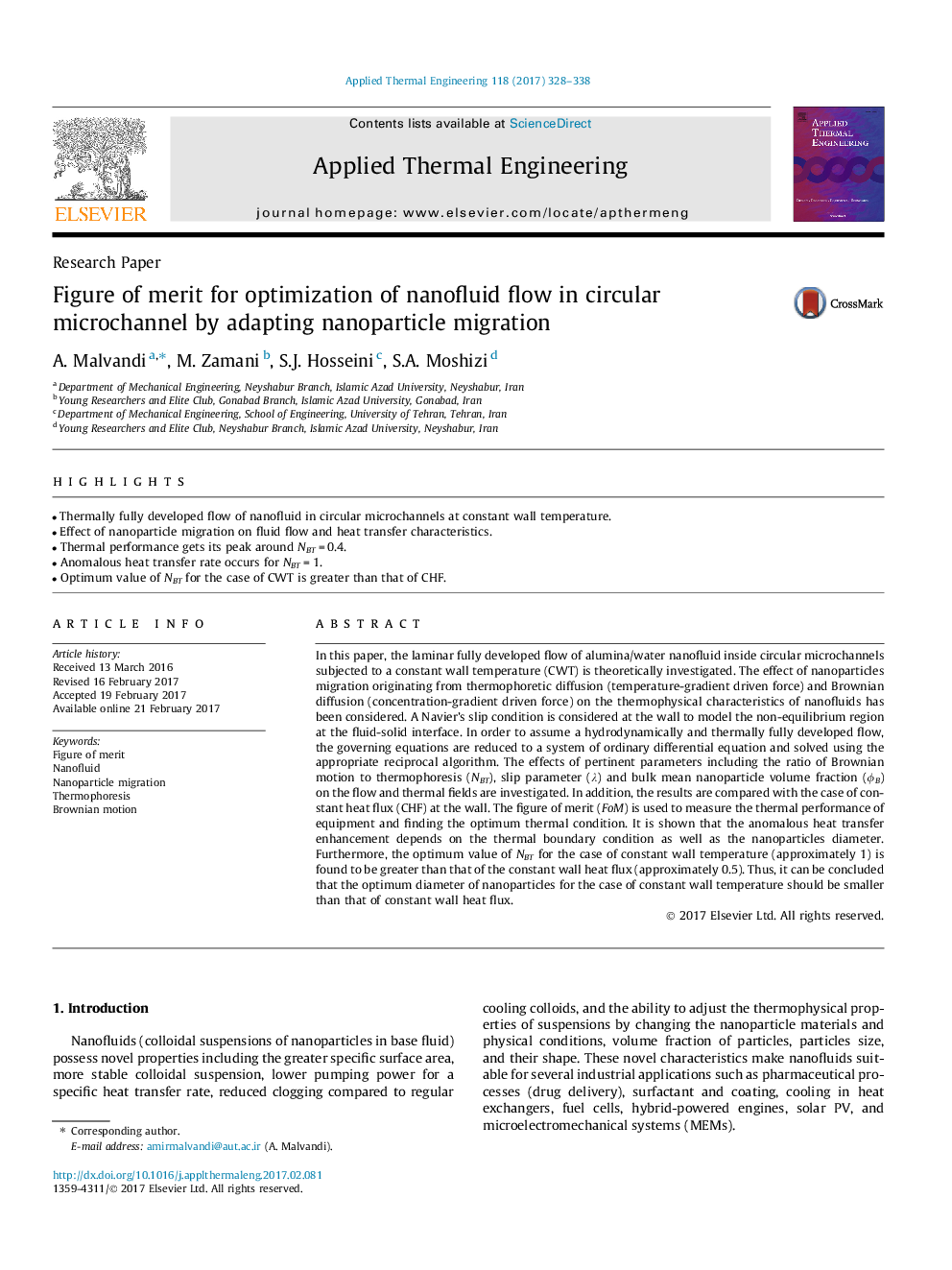| Article ID | Journal | Published Year | Pages | File Type |
|---|---|---|---|---|
| 4991363 | Applied Thermal Engineering | 2017 | 11 Pages |
Abstract
In this paper, the laminar fully developed flow of alumina/water nanofluid inside circular microchannels subjected to a constant wall temperature (CWT) is theoretically investigated. The effect of nanoparticles migration originating from thermophoretic diffusion (temperature-gradient driven force) and Brownian diffusion (concentration-gradient driven force) on the thermophysical characteristics of nanofluids has been considered. A Navier's slip condition is considered at the wall to model the non-equilibrium region at the fluid-solid interface. In order to assume a hydrodynamically and thermally fully developed flow, the governing equations are reduced to a system of ordinary differential equation and solved using the appropriate reciprocal algorithm. The effects of pertinent parameters including the ratio of Brownian motion to thermophoresis (NBT), slip parameter (λ) and bulk mean nanoparticle volume fraction (ÏB) on the flow and thermal fields are investigated. In addition, the results are compared with the case of constant heat flux (CHF) at the wall. The figure of merit (FoM) is used to measure the thermal performance of equipment and finding the optimum thermal condition. It is shown that the anomalous heat transfer enhancement depends on the thermal boundary condition as well as the nanoparticles diameter. Furthermore, the optimum value of NBT for the case of constant wall temperature (approximately 1) is found to be greater than that of the constant wall heat flux (approximately 0.5). Thus, it can be concluded that the optimum diameter of nanoparticles for the case of constant wall temperature should be smaller than that of constant wall heat flux.
Related Topics
Physical Sciences and Engineering
Chemical Engineering
Fluid Flow and Transfer Processes
Authors
A. Malvandi, M. Zamani, S.J. Hosseini, S.A. Moshizi,
